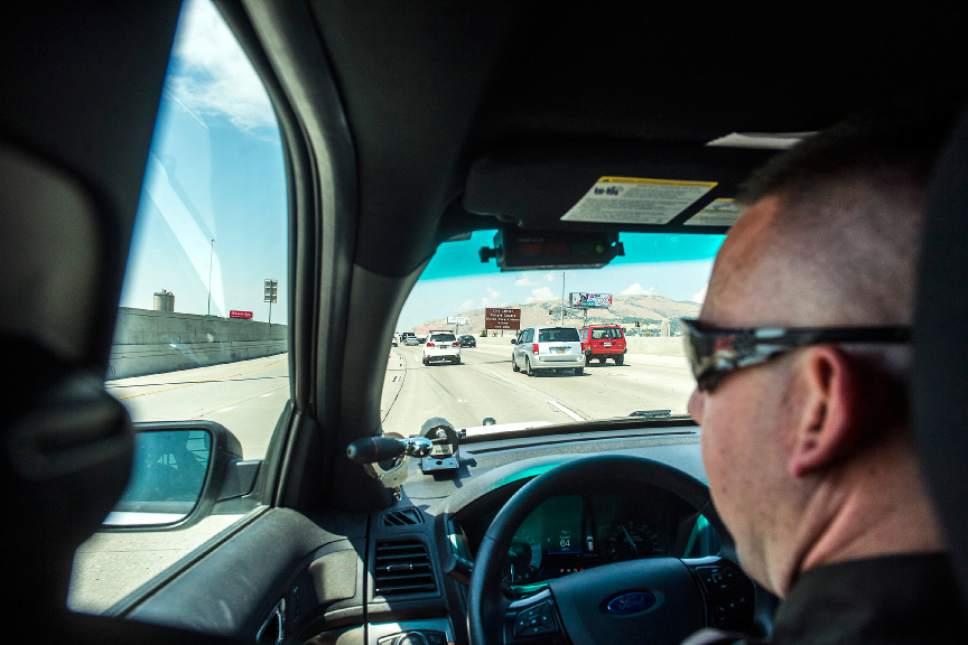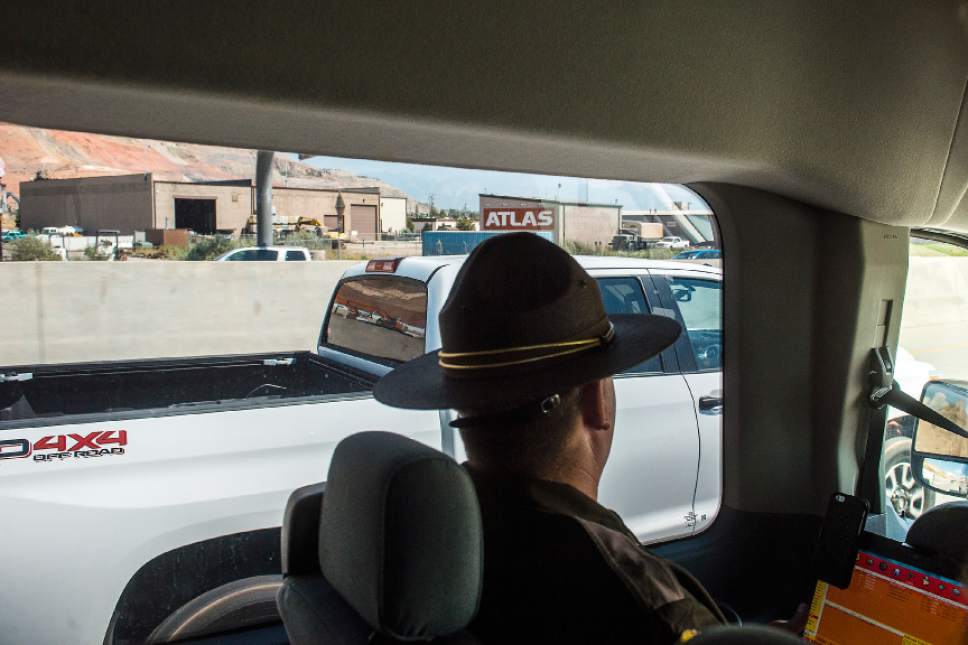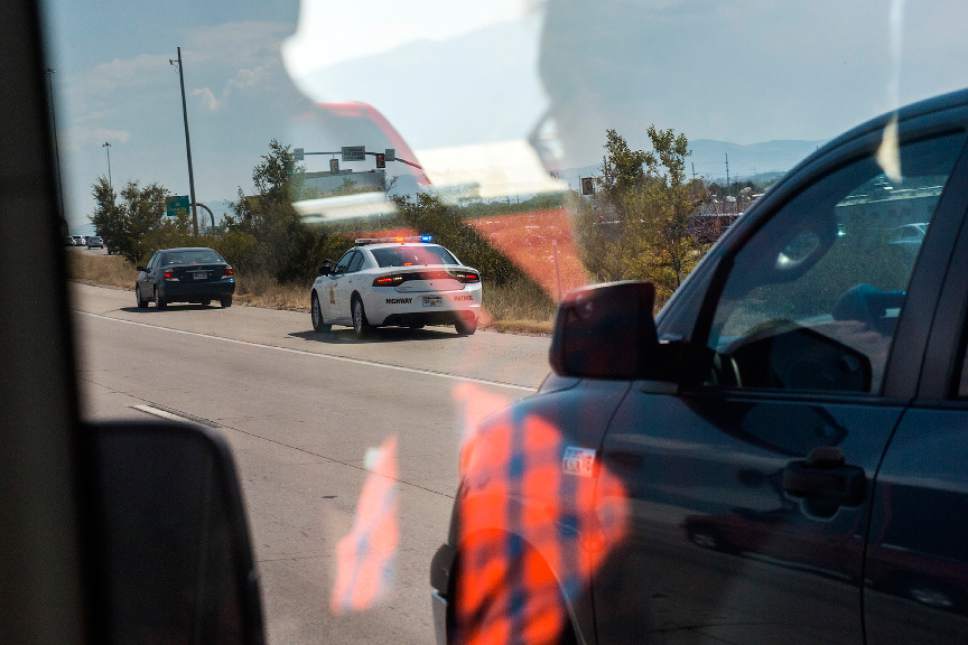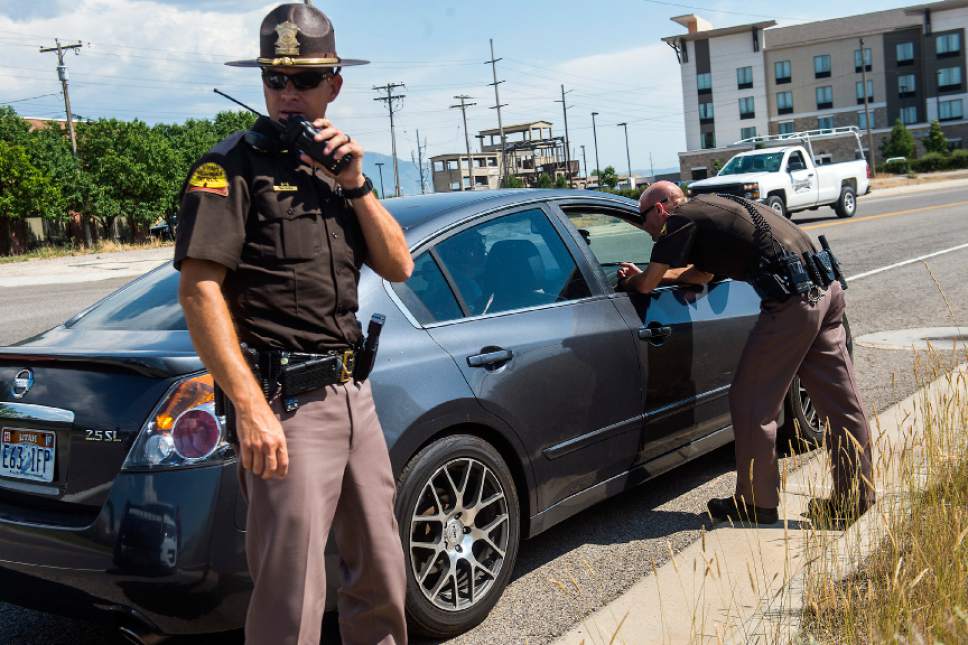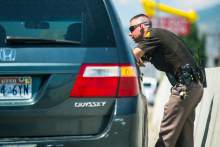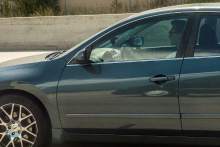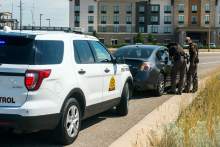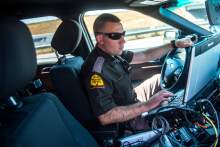This is an archived article that was published on sltrib.com in 2017, and information in the article may be outdated. It is provided only for personal research purposes and may not be reprinted.
Three Utah Highway Patrol troopers looked out the windows of a black 15-passenger van, searching for drivers focused on their cellphones instead of the road.
Almost immediately, one trooper spotted a driver using a cellphone and alerted one of seven nearby troopers, who moved in to make a traffic stop.
The van — an experiment UHP rolled out last month — headed north on Interstate 15 at 2:45 p.m. Thursday with an entourage of reporters for a four-hour effort to catch distracted drivers. While the van isn't exactly unmarked — "stop the texts, end the wrecks" is printed on its sides — it blends into traffic better than a trooper's car. And its passengers have an elevated advantage, such as seeing into cars better than troopers in vehicles lower to the ground.
In general, troopers are trained to keep their heads on a near-constant swivel while they drive. And although they continue to actively look for violations, having spotters relieves some of the pressure to catch all distracted drivers.
Depending on how well the experiment goes, the van may be used more regularly.
By 7 p.m., seven troopers had pulled over 40 drivers. Some 26 drivers received warnings, seven others received tickets, according to public relations director Marissa Villansenor Cote.
One driver heading north near Parrish Lane was pulled over without a tip from the van.
"Like right there," Trooper Derek Shelby said to a Salt Lake Tribune reporter who was riding in the passenger seat. "On his cellphone."
Shelby saw the man looking at his phone, holding it chest-level. The man saw Shelby, too. He and his passenger seemed caught off guard, despite driving right next to a marked UHP car.
The man admitted to looking at his phone; he was expecting a text from a family member, he said, and was checking to see if he had gotten it.
"I explained to him that pretty much any time you have your phone in your hand, it's a hazard," Shelby said after issuing the man a ticket.
Shelby doesn't stop every seemingly distracted driver. Unless he can see the phone, he waits to decide whether they aren't paying enough attention to the road. For example, a man who glanced down multiple times while driving near Bountiful.
"Like him, he just looked down. He's looking down again. Looking down again. Looks down again," Shelby said, deciding whether to make a traffic stop. He decided against it, because "there are certain things you can do with your phone." For example, GPS. Shelby hesitates to stop people when he can't see their phones, in case their glances are just to check directions.
Not everyone who uses their phone gets pulled over; troopers want to make sure "without a doubt" people are breaking the law first, said Lt. Cory Nye, one of the spotters in the van.
Utah Code prohibits using a "handheld wireless communication," such as a cellphone, to "write, send, or read text or data" while driving. Law enforcement can't pull someone over for just talking on the phone or use GPS while driving, though it can be a secondary offense, but texting alone could land drivers a class C misdemeanor and a fine.
In 2016, troopers pulled over 369 drivers for texting while driving during operations in which officers specifically targeted distracted drivers, according to an annual UHP report. Statistics on total distracted-driving citations for 2016 were not immediately available.
"But we all know, driving down the road every day, we can see people on their phones, distracted as they're driving," said Lt. Beau Mason.
As rush hour began on Thursday, traffic picked up and drivers slowed down and more phones came out.
"The beginning of rush hour. The fun begins," Nye said. Ten seconds later: "There's a guy right there."
Drivers to the right and left of the van had phones pulled out; one driver looking at his phone had two children buckled in the back seat.
Another driver put his phone on the dashboard when he noticed he'd caught a trooper's attention. Some drivers didn't notice the big black van at all.
At least twice before 4:45 p.m., the van pulled to the side of the road to wait, as all seven troopers were occupied with distracted drivers.
"See, when speeds slow down, people start figuring they can do other things other than driving," Nye said, as he pointed out a woman looking through her purse while she drove.
One trooper pulled over a semi driver who had a fold-out map stretched across his lap.
It's the second day UHP has taken the spotter van out. UHP tried the van out for the first time last month in Utah County. And officials intend to continue to use it when they can.
The troopers will analyze how Thursday's operation went and decide when they can schedule another spotting event.
"We'd like to see it keep going," Nye said.
But that will depend on resources, such as time, money and available troopers.
Anecdotally, Nye said he has seen an increase in distracted driving in his 19 years on the force.
A lot of the distractions he sees are phones, but he sees people applying makeup and eating cereal, as well.
Not everyone gets a ticket; it's up to the trooper's discretion.
"Most troopers are going to watch and see [if they] are a hazard to others, and they address accordingly," Mason said.
Twitter: @tiffany_mf
Editor's Note: This story was updated to clarify that talking on a cell phone is still legally considered careless driving and is a secondary offense.


